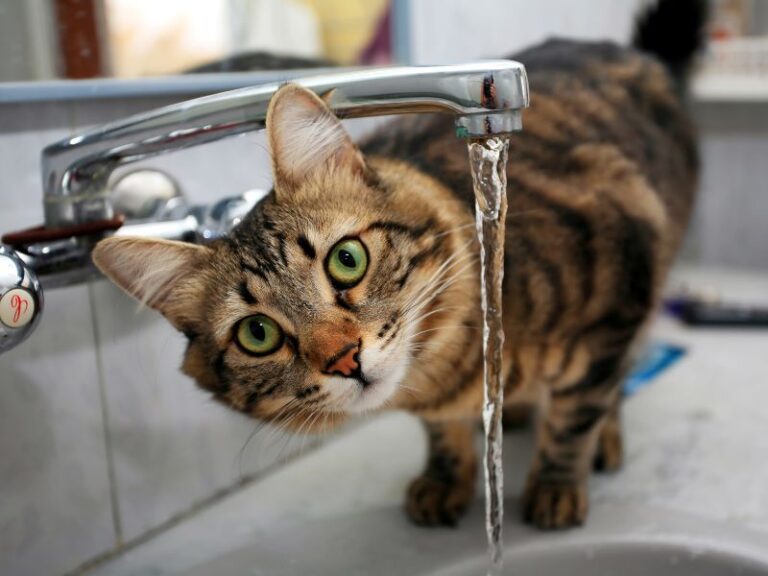Table of Contents
ToggleCats, those enigmatic creatures, communicate in a language that extends beyond purrs and meows. Among their intriguing cues, their ear positions play a pivotal role in conveying emotions and intentions. From their alert, fully erect ears signaling curiosity, to the slight forward tilt that reflects engaged interest, and even the cautious sideways ears hinting at uncertainty, each position speaks volumes. Ears flattened against the head reveal aggression or fear, while ears pulled backward indicate submission. Meanwhile, twitching or rotating ears demonstrate a finely-tuned sensory perception, enhancing their ability to decipher their surroundings. Through these nuanced ear positions, we unravel the complex tapestry of feline expression, decoding the silent language that binds us to our enigmatic companions.
The Basics of Cat Communication
Cats possess a language that extends beyond vocalizations, a silent code conveyed through intricate body movements. This nonverbal dialogue forms the foundation of their interactions. Central to this mode of expression are their ears – delicate appendages that serve as powerful conduits of emotions and intentions. As we venture into the realm of feline communication, we peel back the layers of understanding, revealing how the enigmatic language of cat ear positions reveals their inner world.
Exploring Nonverbal Conversations
While humans rely on words, cats use body language to communicate. From the arch of their backs to the flick of a tail, these subtle cues convey a range of emotions. This unspoken discourse has a profound impact on their social interactions, helping them navigate their surroundings and relationships. Among these cues, the position of their ears is among the most telling, providing a window into their thoughts and feelings.
Ears as Emotional Antennas
Imagine a cat’s ears as antennas, exquisitely attuned to their emotional frequency. The tilt, angle, and movement of these remarkable structures communicate volumes. Just as raised eyebrows or a furrowed brow might convey human emotions, a cat’s ear positions speak of their state of mind. The ears serve as visual aids, broadcasting signals to fellow felines and their human companions alike.
Decoding the Whisper of Ears
Deciphering cat ear positions is akin to translating a silent whisper. A cat with fully erect ears signals curiosity and heightened alertness, ready to explore its surroundings. A subtle forward tilt reflects captivated interest, while sideways ears suggest a mix of curiosity and caution. Ears flattened against the head are an unmistakable display of aggression or fear, while pulled-back ears indicate submission. Twitching or rotating ears fine-tune their sensory perception, offering a glimpse into their acute awareness of the environment.
Intriguingly, these nuances hold significance not only in the context of cat-to-cat interactions but also in the intricate dance between cats and humans. As we embark on this journey of understanding, we unravel the mysteries hidden within the language of cat ear positions, bridging the gap between our worlds and forging deeper connections with our feline friends.

The Elegance of Cat Ear Anatomy
A cat’s ear, a marvel of nature’s design, holds secrets within its elegant structure. Comprising three distinct parts—the outer ear, middle ear, and inner ear—each element serves a crucial role in their sensory world. The outer ear, which we can readily see, is equipped with fur-covered ear flaps known as pinnae, amplifying sounds and aiding their acute hearing. Beneath the surface, the middle ear conducts sound vibrations, while the inner ear translates these vibrations into neural signals, allowing cats to perceive the world with astonishing precision.
Mobility: A Symphony of Flexibility
The enchantment of a cat’s ears goes beyond their appearance; it’s in their movement. With an astonishing 32 muscles adorning each ear, cats possess unparalleled mobility. These muscles bestow a remarkable ability to swivel, tilt, and rotate their ears independently—akin to radar dishes constantly scanning their environment. Their ears can rotate up to 180 degrees, a testament to nature’s finesse in crafting creatures uniquely equipped to navigate their surroundings.
The Dance of Ear Positions and Implications
In the ballet of cat communication, ear positions take center stage. The variations in ear posture convey a lexicon of emotions and intentions. When a cat’s ears stand fully erect, it’s an announcement of heightened alertness, driven by curiosity and exploration. A slight forward tilt signifies more than just interest; it’s an engagement with the world around them. Conversely, sideways ears indicate a blend of intrigue and wariness, reflecting their cautious nature. Flattened ears, pressed against the head, herald feelings of aggression or fear, while ears pulled backward signal submission, a bow to authority. This symphony of ear positions is a silent language that we, as cat companions, have the privilege to decipher.

Common Cat Ear Positions and Their Meanings
Erect Ears:
Amplified Alertness and Curiosity When a cat’s ears stand tall and fully erect, it’s like a symphony of sensory perception has just begun. This ear position is an eloquent expression of the cat’s acute awareness and curiosity about the world around them. Every rustle, every whisper—nothing escapes their finely tuned radar. Erect ears signify an open channel to exploration, suggesting that your feline friend is ready to pounce into the unknown.
Forward-Tilted Ears:
A slight forward tilt of the ears unveils a cat’s keen interest in something captivating. It’s as if their attention has been snagged by a fascinating idea or object. This position isn’t just about awareness; it’s an invitation to engage. As the ears tilt forward, they invite interaction, inviting us to share in the intrigue that has captured their imagination.
Sideways Ears:
When a cat’s ears slide to the side, they reveal a delicate dance between curiosity and caution. It’s a noncommittal stance, suggesting that while they’re drawn to the situation, a note of uncertainty prevails. Sideways ears showcase a cat’s hesitancy, a reminder that they’re navigating an uncharted path, and proceeding with care is in order.
Flattened Ears:
The Language of Aggression and Fear Flattened ears paint a vivid portrait of a cat’s emotional turmoil. This position is far from subtle—it’s a billboard broadcasting aggression or fear. When a cat feels threatened, the ears pull back against the head like a shield, ready to fend off any potential danger. The flattened ears serve as an urgent plea to back off, signaling that the situation has taken a tense turn.
Backward Ears:
Submission and Insecurity Ears pulled backward embody humility and submission. It’s a gesture that echoes through the ages, signaling to higher-ranking cats or even humans, “I respect your authority.” This ear position showcases vulnerability, expressing the cat’s desire to avoid conflict and defer to those they perceive as dominant. It’s a gesture that speaks volumes without a single word.
Twitching or Rotating Ears:
Dance of Heightened Senses Imagine ears that sway and twitch like radar dishes, tuning into every nuance of sound. Twitching or rotating ears reveal a cat’s acute sensory perception, akin to a finely tuned instrument seeking out even the softest vibrations. This motion is an ode to vigilance, indicating that they’re fully attuned to their environment, ready to respond to the slightest change.

Factors Influencing Cat Ear Positions
Environmental Factors
The world around a cat is an orchestra of stimuli, each note striking a chord within their perceptive ears. From the gentle rustling of leaves to the distant hum of traffic, external influences orchestrate the positions of a cat’s ears. Their ears are like radar dishes, pivoting towards the source of interest. In an environment brimming with auditory intrigue, their ear positions offer a window into the sensory symphony playing out around them.
Emotional States
The Conductors of Ear Movement Cat ear positions are the visual echoes of their emotional states. Just as human expressions change with mood, so do a cat’s ears. When content and at ease, their ears often stand upright or tilt slightly forward. Fear and aggression, on the other hand, send them flat against their head like a shield. A relaxed, open posture signifies comfort, while tense situations elicit cautious, sideways ears. Learning to read these cues allows us to better understand our cats’ feelings and adapt our interactions accordingly.
Health and Well-Being
Ears aren’t just indicators of mood; they’re also subtle messengers of a cat’s well-being. An unusual or persistent change in ear positions might be a red flag for underlying health issues. Infections, injuries, or discomfort can cause cats to adjust their ear positions in response to pain. It’s a silent plea for attention, an attempt to communicate a need that words can’t convey. By paying attention to these shifts, we can potentially catch health concerns early and ensure our feline companions receive the care they deserve.

Tips for Understanding and Responding to Cat Ear Language
Decoding the Ear Code: Practical Insights
- Observe Context: Context matters. Consider the environment, recent events, and the cat’s overall demeanor. A certain ear position might have different meanings in varied situations.
- Note Symmetry: Uneven ear positions could indicate discomfort or injury. Pay attention to both ears to get a complete picture of their emotional state
- Combine with Body Language: Cat communication is holistic. The ears are just one part of the story. Combine their ear positions with tail movements, vocalizations, and overall body language for a complete understanding.
Responding with Feline Finesse
- Respect Boundaries: If you notice flattened ears or sideways positioning, give them space. Your cat might be unsure or even stressed. Allow them to approach you on their terms.
- Engage Curiosity: Erect or forward-tilted ears often signal interest. Introduce engaging toys or activities to satisfy their curiosity and mental stimulation.
- Provide Reassurance: Backward ears might signify submission or insecurity. Speak to your cat in soothing tones, avoiding sudden movements, to reassure them.
- Seek Veterinary Care: Persistent changes in ear positions, especially combined with other signs like lethargy or discomfort, could indicate health issues. Consult your vet for a thorough checkup.
Beyond Ears: Reading the Bigger Picture
- Watch the Whole Body: While ears are eloquent messengers, they’re part of a bigger communication canvas. Observe tail positions, whisker angles, and overall posture to truly grasp your cat’s emotions.
- Consider the Eyes: Cats often communicate through eye contact. Dilated pupils or slow blinking can add depth to their message, complementing their ear positions.
- Know Your Cat: Every cat is unique. Spend time with your feline friend, learning their individual expressions. Over time, you’ll become attuned to their subtleties, forming an even deeper bond.
In the captivating world of cat communication, understanding their ear language is like unlocking a treasure trove of insight. By practicing attentive observation, responding with sensitivity, and considering the bigger picture of their body language, we enter into a nuanced dialogue with our feline companions. These shared moments, where words are replaced by a silent dance of ears and expressions, deepen the connection between species and enrich our lives with the magic of feline companionship.

Final Words
In the intricate tapestry of feline communication, cat ear positions emerge as a silent but eloquent language, offering a window into the emotions and intentions of our enigmatic companions. As we’ve delved into the nuances of “Understanding Cat Body Language: Ear Positions and Their Meanings,” we’ve unveiled the tales behind erect ears’ curiosity, forward-tilted ears’ engagement, sideways ears’ caution, flattened ears’ aggression or fear, backward ears’ submission, and twitching ears’ heightened sensory perception. These subtle movements, coupled with a cat’s holistic body language, create a rich dialogue that transcends words. By mastering this art of interpretation and response, we deepen our connection with these remarkable creatures, forming a bond that thrives in the silent conversations of ears, glances, and gestures—an enduring testament to the harmony between human and feline worlds.






